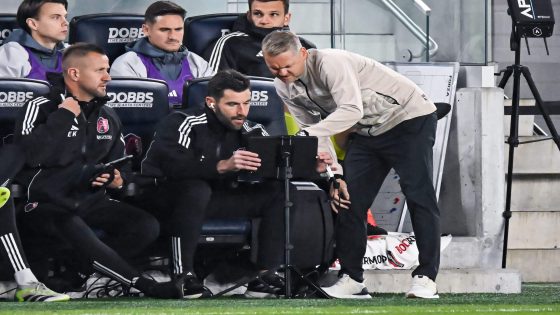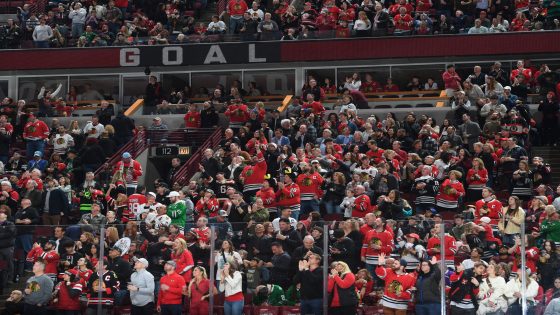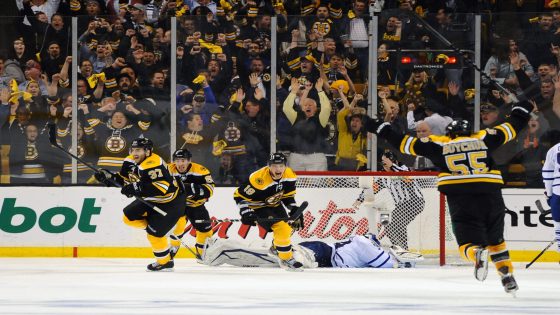The 2024 MLS season is now roughly a quarter complete, with teams having played between six and eight games at time of writing. That leaves us with just enough data to start tracking how teams are playing, and one way to do this will be looking at each team’s goals added, a metric created by American Soccer Analysis.
Goals added (or g+) predicts goal probabilities at every touch, not just shots as expected goals (xG) does. The g+ stat is worth paying attention to because it can measure the value of possessions that may create danger without ending in a shot. All of those additional data points make it a more sensitive stat for evaluating teams early in the season, when we still don’t have much information to go on from the small samples of points, goals, and shots.
But given what we have, here’s how things have changed from last season:

Graphic by John Muller
Bear in mind that g+ isn’t a direct measure of a team’s strength; a side’s overall mettle is still affected by schedule, game state, player absences and other factors. Nevertheless, g+ clues us in on how well a team is playing without being too fixated on points, goals and xG.
I’ll highlight a few teams in each quadrant of the above chart, but if you’re still struggling to wrap your head around goals added, don’t panic: we use some other tools as well.
Better attack, better defense
Atlanta United has looked better in 2024, which has helped ease the pressure on midfielder Thiago Almada to snap out of his early season slump (one goal, one assist in 540 minutes). Atlanta averages a shot for every 54.3 touches it makes this year, a far more efficient rate than last year’s 66.7.
Charlotte FC has managed just one goal from set pieces, but the club’s xG per 100 set pieces has risen from 2.7 (27th in MLS last year) to 4.6 (7th in 2024). The club’s shooting accuracy is also spiking from 32.9% to 39.5%. That on-target rate is likely to come back to earth a bit, though; 39.5% would have been the league’s best in 2023.

The Colorado Rapids underwent a dramatic offseason overhaul with Chris Armas as manager, and are scoring twice as often as last year on similar volume and accuracy. They’re also seeing results out more consistently so far (dropping 0.8 points per game from leading positions, down from 1.4 a year ago). Their front-line press is forcing twice as many high turnovers per game (5.0, up from 2.3) – that seems likely to sustain given Armas’ tactical approach.
St. Louis City is allowing opponents 1.7 meters less progress upfield per possession and is winning 6% more ball recoveries than last season. Their effort to add width over the winter has also resulted in a 27% increase in open play crossing volume, which has helped grow their per-game chance creation from 9.2 to a healthier 12.1.

Not all is going according to plan, though. Sam Adeniran has been the team’s top volume shooter, but is training on his own as Carnell is “focusing on the guys who bring a certain standard, intensity, work ethic in training.” Still, Tomas Totland and Chris Durkin have helped buildup as predicted when they signed, leaving an opening for other forwards to pick up Adeniran’s slack.
Better attack, worse defense
We call this the “pure entertainment” zone.
The Philadelphia Union has realized that being more incisive with possession naturally affords opponents more time on the ball. The club’s field tilt has dipped 3.5% to 44.7% (24th league-wide), while they’re hoping to play more in transition by increasing their long pass rate by 4%.
LA Galaxy newcomers Joseph Paintsil and Gabriel Pec have helped the club make more direct attacks per game, and its xG per shot has correspondingly risen from .104 to .135. The flip side to playing on the counter more: opponents are taking 3 more shots per game than they did in 2023, and their 12 goals conceded are the fourth-most in the West.

GO DEEPER
How Joseph Paintsil has turned the LA Galaxy around in MLS
Los Angeles FC‘s forward line is less effective at winning the ball upfield than it was in 2023, with attacking third possession wins down to 5.1 per game in 2024 from 7.2 a year ago. LAFC is working on playing with a higher defensive line of engagement, but the additional space behind the backline has seen opponents take 13.1 shots per game after being limited to 10.6 last year.

CF Montréal has traded shot volume for quality chances under new coach Laurent Courtois: 29.2% of those opportunities qualify as “big chances,” the highest rate in MLS.
(Big chances are defined, somewhat subjectively, as any situation where a player should reasonably be expected to score. Examples include a one-on-one with the goalkeeper, an unpressured close-range attempt with a clear path toward goal, or a penalty kick.)
Opponents are finding it too easy to get into the attacking third, though: Montreal’s 35% field tilt is the league’s second-weakest, while they’re facing 16.6 shots per game. At minimum, they make for great neutral viewing.
The Seattle Sounders‘ are shown in the chart to have a big boost in attacking g+, which might be surprising to many. Brian Schmetzer’s side put five goals past Montréal two games ago, but have scored just four times in their other six (completed) games. They’re creating chances — 10.5 per game, 6th best in MLS — but not those juicy should-finish ones, with their big chance rate down from 17.7% to 13.3% (8th worst). The players’ contribution breakdown shows a lot of healthy build-up contributions, but far less shooting or chance-creating end product compared to St. Louis above.
The good news for Sounders fans is that the team is trending better – after a brutal 0% big chance rate in their first three games, that’s spiked to 22% in their last four. Getting designated player Pedro de la Vega back could be vital.

Worse attack, better defense
Interestingly, all three of the teams in this quadrant are in contention for their conferences’ top four places.
The New York Red Bulls aren’t as cross-dependent as they were last year, dipping from 16.1 crosses per game to 11.6. Instead, their upfield progress has been more methodical — advancing 1.14 meters per second of possession, far below last year’s rate of 1.64. An uptick in big chances and Lewis Morgan’s return has kept the goals coming.
FC Cincinnati is a textbook case of what happens when you don’t replace a top-end center forward. With Brandon Vazquez sold to CF Monterrey over the winter, FCC’s average shot distance regressed from 16.3 to 18.1, and their rate of shots from outside the box has spiked from 33.7% (pretty good) to 44.1% (very bad). They’ve been even harder to break down defensively though, affording opponents just 7.3 created chances per game.

Houston Dynamo has played without designated players Héctor Herrera (knee) and Sebastian Ferreira (lower body) throughout the year, and it’s generally hard to attack without your top chance creator and a viable scoring threat. Manager Ben Olsen has them playing for headed shots (24% of all shots, third-highest in the league), but the real modification has come in possession. Houston has the league’s second-highest rate of nine-plus pass sequences (13.3%, trailing Puig’s Galaxy) as well as its slowest direct speed (1.07 meters per second). In short, this is smart, fundamental-based soccer.
Worse attack, worse defense
You don’t need me to tell you this is not where you want to end up.
I already did a standalone on Austin FC in this week’s MLS Takeaways, so I’ll just give the condensed summary: their placement on the matrix is even more grim than Miami’s was at the time of Phil Neville’s dismissal last summer, when his side was last in the East.
Speaking of Neville, his early weeks with the Portland Timbers have seen the team become comeback specialists. They’ve seen some luck at play: their opponents have the league’s second-highest shot conversion rate (17.8%) despite average shooting distance. The Timbers are allowing the third-friendliest xG/shot (0.144), ultimately resulting in third-worst xGA per game (1.9). Still, they’ve gotten some good results in the young season; this looks more like a team that’s still acclimating to a new boss than a team in crisis.
Nashville SC is off to a bad start after years of relying on a staunch defense and Hany Mukhtar. They’re allowing 2.1 more shots per game, 1.6 more on-goal, and a 73% increase in expected goals conceded per game (1.1 to 1.9). The back line looks overworked, and a look at their defensive actions by zone compared to the league standard matches the eye test.
Nashville’s attack is also struggling; chance creation has plummeted from 8.3 per 90 (just below league average) to 5.6 (near Austin levels of meager). Most concerningly, last summer’s big acquisition (Sam Surridge) has 2 goals in 352 minutes.

It may be a surprise to see the Columbus Crew drifting to the lower left, but context is vital. They’re shooting less per game (15.2 to 12.6) and creating fewer chances (11.8 to 10.1), but that’s to be expected when your most important attacker (Cucho Hernández) is in and out of the lineup. They’re also through to the CONCACAF Champions Cup semifinal, which has forced Wilfried Nancy to rotate his side a lot in the early weeks. The defending champions will be fine.
Improvement in some places, static in others
D.C. United is third with a 27.9% big chance rate, keeping Christian Benteke well-fed in dangerous spots. There’s some naivety to their late-game approach, having already dropped 10 points from leading positions. Still, they’ve seemingly taken a large step in the right direction.
Real Salt Lake is among the league’s youngest teams, and the club is embracing transition moments with 3.9 direct attacks per game – 2nd highest in MLS. The club is also limiting opponents’ shot quality — no team has a stingier xG per shot faced than their 0.074.

Minnesota United is another of the league’s most reinvented sides in 2024, with Khaled El-Ahmad and Eric Ramsay installing a more proactive approach. The Loons’ defense has benefited from the change to a base 4-3-3, no longer utilizing a dedicated No. 10 who contributes little to the press. They’re winning more high regains (from 5.2 per game to a third-best 6.6) and have a more favorable field tilt (47.9% to 56%), and allow opponents relatively low-quality shots (0.097 xG per) despite inviting many of them (14.6 faced per game).
In closing, I present this in lieu of a full written section on FC Dallas.

It is very, very hard to get results when you’re only ahead in the scoreboard 1% of the time. (or 7%, in the case of New England).
(Top photo: Rick Ulreich/Icon Sportswire via Getty Images)



